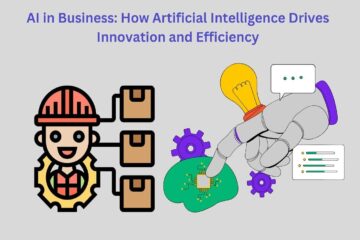
AI in voice assistants
In a world where convenience is king and every second counts, voice assistants have emerged as the silent partners in our digital lives. Whether it’s your morning routine or the mundane tasks that fill your day, speaking to a device that responds almost intuitively feels like magic. But behind this enchantment lies a complex interplay of artificial intelligence, machine learning, and natural language processing that shapes how we communicate with technology. In this article, we’ll delve into the evolution of AI in voice assistants, explore the innovative algorithms that power them, and examine their growing influence on our daily interactions. As these digital companions continue to integrate into our homes and workplaces, understanding their capabilities and limitations becomes not just fascinating, but essential in navigating the future of human-technology communication.
Table of Contents
- The Evolution of Voice Assistants and Their Impact on Daily Life
- Understanding Natural Language Processing in Voice Technology
- Enhancing User Experience Through Personalization in Voice Assistants
- Best Practices for Privacy and Security in Voice-Activated Devices
- Closing Remarks
The Evolution of Voice Assistants and Their Impact on Daily Life
The journey of voice assistants has seen a remarkable transformation since their inception. Initially developed as simple tools for basic tasks, these intelligent systems have evolved into complex entities capable of understanding context, preferences, and even emotional tones. Today’s voice assistants leverage advanced artificial intelligence (AI) technologies, enabling them to perform an impressive array of functions that enhance day-to-day activities. From controlling smart home devices to managing schedules and providing news updates, the potential of these tools seems limitless. By learning from user interactions, voice assistants can personalize experiences, making them indispensable companions in daily life.
This evolution has not only streamlined productivity but also reshaped our social interactions and accessibility. People are now more inclined to engage with technology through natural language, reducing the barriers of traditional interfaces. Consider the following advantages of modern voice assistants:
- Hands-free Convenience: Ideal for multitasking, allowing users to send messages or make calls without stopping what they are doing.
- Accessibility: Beneficial for individuals with disabilities or those who struggle with conventional input methods.
- Integration: Seamlessly connects various smart devices, creating a cohesive digital ecosystem in homes.
| Voice Assistant | Launch Year | Key Features |
|---|---|---|
| Siri | 2011 | Natural Language Processing, Third-party App Integration |
| Google Assistant | 2016 | Contextual Awareness, Multi-device Synchronization |
| Amazon Alexa | 2014 | Smart Home Control, Skills Marketplace |
The impact of these advancements is significant, shaping our interactions with technology and with each other. As AI continues to advance, we can expect voice assistants to become even more integrated into our lives. For a deeper understanding of their evolution and how they operate, you can explore resources from ResearchGate and Forbes.
Understanding Natural Language Processing in Voice Technology
Natural Language Processing (NLP) is at the heart of voice technology, allowing machines to understand and generate human language seamlessly. At its core, NLP involves several subfields, including syntax (structure of sentences), semantics (meaning of words), and pragmatics (contextual language use). By leveraging sophisticated algorithms and deep learning techniques, voice assistants can interpret user commands, respond contextually, and even engage in conversations that feel increasingly human-like. Users benefit from enhanced functionality such as personalized responses, improved search results, and a more intuitive interaction model. For a deeper dive into the workings and benefits of NLP, you can explore insights provided by Towards Data Science.
The effectiveness of NLP in voice technology is evident in its ability to learn and adapt over time. Users provide vast amounts of data through their interactions, which helps refine the algorithms and provides contextual understanding that improves user experience. Some of the key components contributing to this advancement include:
- Speech Recognition: Converts spoken words into text, allowing the system to process commands accurately.
- Sentiment Analysis: Evaluates the emotional tone behind conversations, enhancing responsiveness.
- Contextual Awareness: Uses historical interaction data to provide personalized responses.
Moreover, as NLP models evolve, voice assistants are increasingly capable of handling diverse languages and dialects, making them accessible to a global audience. The following table outlines some of the major NLP technologies that power voice assistants:
| Technology | Functionality |
|---|---|
| ASR (Automatic Speech Recognition) | Recognizes and transcribes spoken language. |
| NLU (Natural Language Understanding) | Comprehends the intent behind user requests. |
| NLG (Natural Language Generation) | Generates human-like responses from data. |
These advancements illustrate not only the technical progress in the field but also the growing potential for voice technology to reshape how we interact with digital devices. For industry insights on NLP’s role in automation and customer experience, check out resources from Forbes.
Enhancing User Experience Through Personalization in Voice Assistants
In the ever-evolving landscape of technology, voice assistants are becoming increasingly capable of tailoring interactions to meet individual user needs. By harnessing the power of artificial intelligence, these tools are not just responding to commands but are learning user preferences and habits over time. This adaptability creates a more engaging experience, as each interaction feels uniquely crafted for the user. From adjusting the volume based on user feedback to offering personalized recommendations for music, podcasts, or reminders, voice assistants are redefining convenience. As a result, users find themselves more deeply connected to their devices, enhancing daily productivity and satisfaction.
Personalization extends beyond simple task management; it involves understanding user context and emotional states. For instance, an assistant can gauge when a user appears stressed based on their voice tone and can respond with calming playlists or mindfulness suggestions. Moreover, historical data allows voice assistants to recognize patterns and predict needs, such as ordering coffee every Monday morning or suggesting weather updates before the morning commute. By leveraging data responsibly, companies can foster a more meaningful interaction. Here’s a brief overview of how personalization in voice assistants is structured:
| Key Personalization Features | Description |
|---|---|
| User Profiles | Customizes the experience based on individual user settings and preferences. |
| Contextual Awareness | Adapts responses based on the current environment or situation. |
| Behavioral Learning | Improves responses and suggestions through continuous interaction data. |
Ultimately, the integration of personalization not only enriches the user experience but also supports deeper engagement with the technology. As developers refine these systems, the potential for more nuanced and empathetic interactions continues to grow. For further insights on the importance of personalization in digital interactions, please visit Forbes or explore research from Harvard Business Review.
Best Practices for Privacy and Security in Voice-Activated Devices
As voice-activated devices become increasingly integrated into our daily lives, ensuring their privacy and security is paramount. To minimize risks, users should consider the following best practices: regularly update device firmware to benefit from the latest security enhancements, and always set a strong, unique password for your device accounts to prevent unauthorized access. Disabling features like voice purchasing or limiting voice recognition to specific users can further enhance security. Additionally, it’s wise to use privacy settings to manage what data is collected and how it is used. Users should monitor and delete their voice recordings periodically, maintaining control over the information stored by their devices.
Furthermore, being aware of potential risks helps users navigate the evolving landscape of voice technology. Consider these essential precautions:
- Ensure that your Wi-Fi network is secure, using encryption methods like WPA3.
- Limit the connection of other smart devices to the same network.
- Review your privacy settings regularly and adjust them based on current needs.
Staying informed about updates from trusted manufacturers is also critical. Websites like Consumer Reports provide valuable insights into evolving best practices. By adopting these strategies, users can create a safer, more controlled environment while enjoying the convenience offered by voice-activated technologies. For more comprehensive information on safeguarding personal data when using digital assistants, visit the Electronic Frontier Foundation.
Closing Remarks
As we stand on the brink of a new era, the evolution of AI in voice assistants not only redefines our interaction with technology but also reshapes our daily lives. With every spoken command and response, these digital companions bring us closer to a seamless blend of convenience and connectivity. While the potential for innovation continues to expand, it’s essential to navigate this landscape with awareness and mindfulness. The journey of AI in voice interaction is just beginning, and as we explore its depths, we must remain vigilant stewards of the ethical considerations it entails. The future promises a dialogue that is not just between human and machine, but also among minds dedicated to crafting a world where these technologies enhance our lives responsibly. Let us embrace this transformative potential, ensuring that as we converse with our voice assistants, we are not only heard but also understood in the rich tapestry of our human experience.












